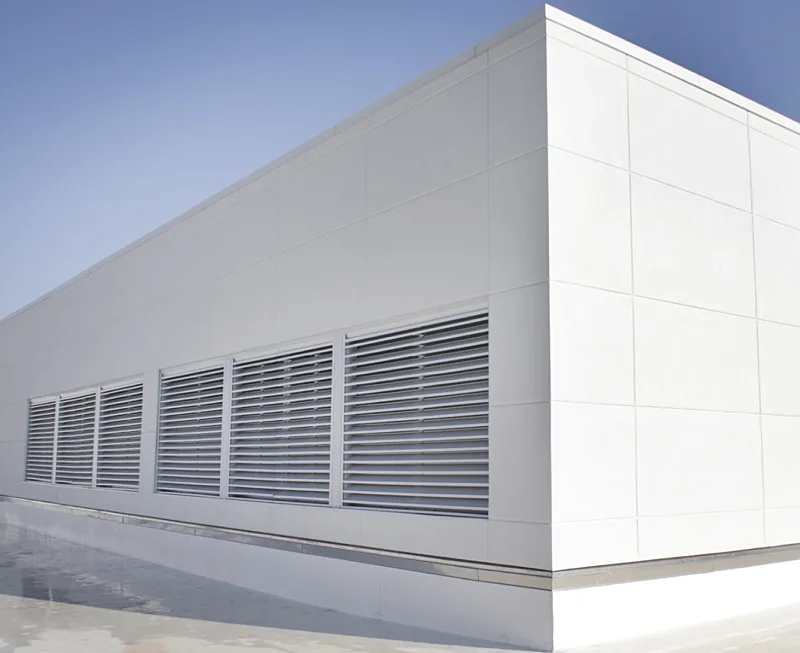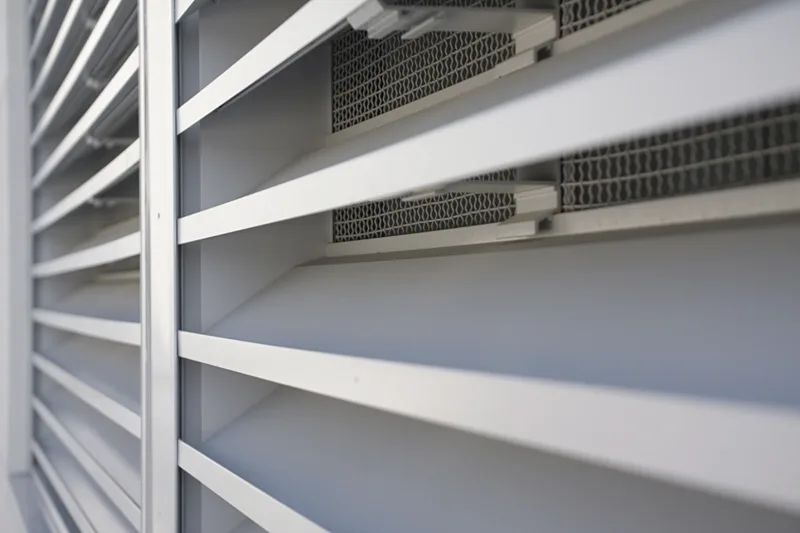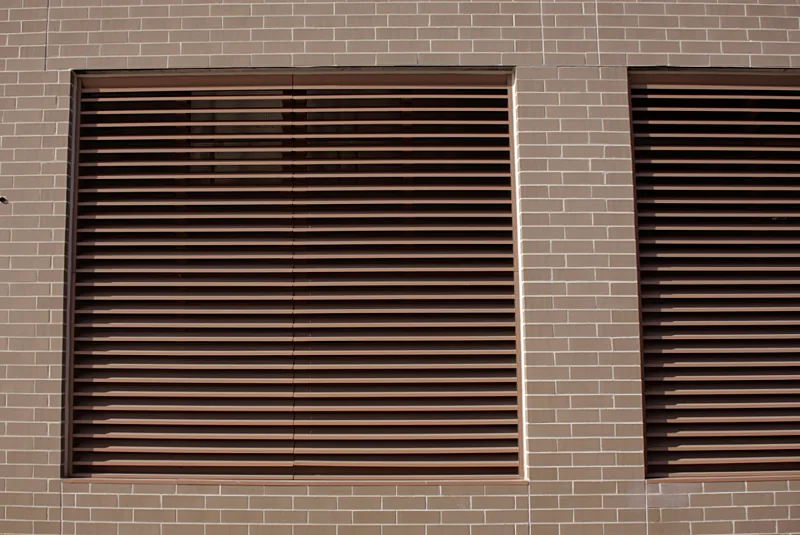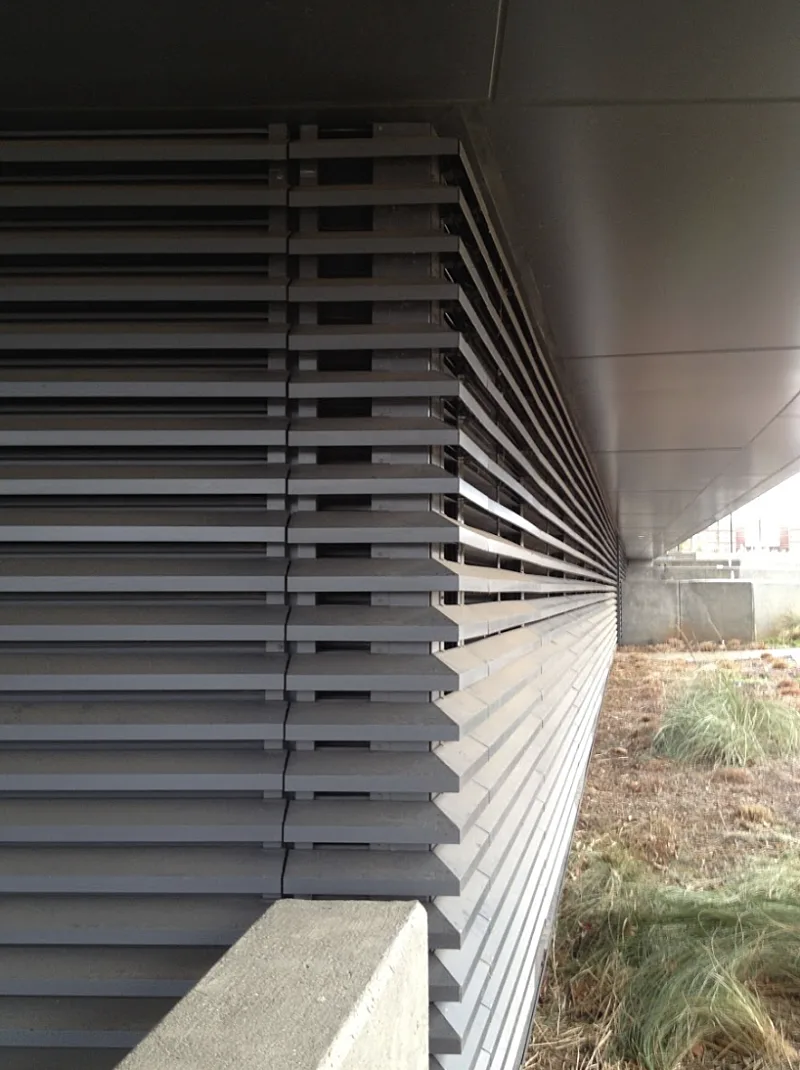Louvers improve airflow and natural ventilation while blocking out undesirable elements. There are two primary choices when it comes to louvers – drainable and non-drainable.
Drainable louvers have embedded gutters, designed to collect moisture and water, remove it from the airstream, and redirect it out of the building.
Non-drainable louvers do not have gutters, letting the water slide down the face of the blade, similar to a waterfall.
Here’s what you need to know about the two types of louvers in order to figure out which one better suits your needs:
Drainable Louvers

As mentioned before, the blades in these louvers have embedded gutters that prevent rainwater from entering the building or industrial space. This makes drainable louvers ideal for intake applications connected to ductwork in buildings, or high airflow areas, such as turbine or engine rooms and other industrial spaces.
When the water is captured by the gutter, it is redirected to channels in the louver jambs, which drain the water out the front of the louver sill. Drainable louvers are suited to applications that require medium to high air intake velocities, due to the superior performance.
The shape of a drainable louver can create added resistance to the airflow, reducing the air performance of the louver.

Fixed drainable louvers are aluminum-extruded with varying angles, arrays, and depths, providing water resistance for intake and exhaust applications.
Non-Drainable Louvers

Non-drainable louvers don’t have embedded gutters – the excess water cascades off the blades in a waterfall effect, increasing the chance of water penetrating the facade. However, the benefit of no gutters is that there is less resistance to air moving along the louver blade, creating a lower pressure drop.
Non-drainable blades (sometimes referred to as straight, or J-blades) typically have superior air performance, due to decreased air resistance. They’re best used for exhaust applications where the air blows out, indoors, or wherever the air is static.
When it comes to drainable vs. non-drainable louvers, the type ‘Z’ or ‘J’ non-drainable louvers allow better air performance but aren’t as efficient against the combined effects of rain and wind. Even the type ‘K’ category (non-drainable blades with an added baffle to capture moisture), which is sometimes labeled ‘storm-proof,’ provides limited protection against wind and storms.

Fixed non-drainable louvers are also aluminum-extruded, and come in different shapes, angles, and spacing. They’re more suited to exhaust or low intake velocity applications.
Drainable vs. Non-Drainable Louvers
Understanding what is required of your louvers will give you a better idea of which type suits your needs best. Drainable blades provide better protection against water penetration, but may offer higher pressure drops. Non drainable louvers may offer a more appealing aesthetic due to the lack of gutters. Cost and maintenance may also be a factor.
"It is important to have a regular louver maintenance schedule. It is recommended to have your louver system cleaned up every 3-6 months depending on the type of structures around you. If you live in an area where there is an ocean around or industrial zones, then your louvers should be cleaned up more frequently" - Chuck Waltman, Houston Home Remodeling Pros
Some louvers are built for aesthetics, some for rejection of water, others are built for better structural performance. Many types of louvers are available at AWV to meet your requirements for performance, depth, opening size, shape, and type of blades.
For more information and guidance regarding drainable vs. non-drainable louvers, contact AWV now and get a free quote.







